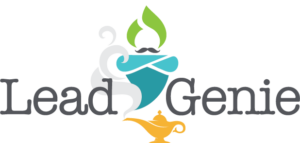Are you getting fewer conversions from your senior living web forms than expected? Wondering how you can optimize your forms and the landing pages they’re on to increase your leads? Fortunately, you can try a few tactics to improve your web forms and convert more leads.
Read on to learn five ways to engage new leads using forms on your website effectively.
Red flags that your web forms might not be effectively handling your senior living leads
If, by testing your web form or through feedback from your leads, you find that one or of these are happening when a web form is filled out, it’s a sign that something is broken behind the scenes:
- “Submit” is clicked but nothing happens.
- “Submit” is clicked but it doesn’t send the lead to a thank you page or fails to send a thank you message.
- The lead doesn’t receive the offered item, like a piece of content or a response by a person.
- The web form is not optimized for mobile devices and doesn’t function as intended.
If your web form and landing page are working properly, but you’re not getting the expected volume of leads, consider the following optimizations.
Top ways to optimize your web forms for seniors
- Keep it short. Only ask your leads to provide the information that you need. Long forms that take time and require leads to divulge a considerable amount of personal information may discourage individuals from completing the form.
- Make it simple. Try to design your form using a single-column layout with one field per row. This format draws your leads’ eyes down the page and helps prevent any confusion on what to fill in next.
- Be clear. Label your fields so your leads know exactly what to enter in each field. When providing a hint for a field, place it outside the form field so leads can see it when they’re typing.
- Try an alternate layout of the landing page. If your form is found on a landing page, for example an offer to download a piece of content like an informational guide, the layout of the page can make a difference in how many visitors will fill out the form. Conventional wisdom would put the form on the right side of the page, with the details of the download on the left, but try flip-flopping the layout by placing the form on the left side.
- Follow up. Create a thank-you page and email that your lead will automatically see after submitting the web form. If your lead requests a brochure or white paper, include the PDF link on the thank-you page and in the email. Offer a relevant call-to-action to keep your leads engaged on your site and continue providing helpful information to address their pain points.
- Set up an appropriate next step. The key word here is ‘appropriate.’ If your lead isn’t requesting a phone call, don’t call them. Determine where they fall in the buyer’s journey and set the best step to take next. Marketing-qualified leads should be added to an email lead nurturing campaign. Sales-qualified leads may be ready for a call or an email. Assess your new lead before you take immediate action so you’re delivering the right message at the right time.
Does your sales & marketing team need additional support handling web form leads?
If you need assistance following up with new web form leads, we invite you to explore LeadGenie, a complete lead management solution that will help your marketing and sales team and boost your tours and move-ins. LeadGenie offers virtual sales support, quickly and consistently responding to your leads — including leads from web forms.
We do this through a customized approach free of long-term contracts and one-size-fits-all packages. You decide what works best for you! Set up a no-obligation consultation today!




